An extreme discipline of cycle touring, bikepacking requires strict codes on equipment. We’ll explain how to choose your (electric) bike and prepare your bikepacking route to cover the miles with complete peace of mind, during your vacation or weekend getaways.
What is bikepacking?
Bikepacking is a portmanteau word from English. It takes up the notion of backpackingthis practice which consists of going on an adventure with your backpack (backpack), this time adding the bicycle (bicycle).
Bikepacking is therefore a bicycle trip with bags only. Because the purists are clear: there is no question here of including luggage racks or pannier racks. It all comes down to riding with elements attached to the structure of the bike, period.
What is the difference between bikepacking and cycle touring?
Bikepacking is more synonymous with adventure, while cycle touring is broader in its practice. Cycle tourism is a generic term which brings together long journeys by bike to travel, discover places and monuments, while bikepacking is a more sporty version centered on cycling activity with its codes.
In bikepacking, there is no additional equipment or hotel: you have to make do with the minimum required, compared to cycle touring which aims to be more comfortable. Since bikepacking rhymes with light equipment, it also corresponds to a long weekend trip or a day like hiking, and not necessarily a week-long expedition.
How to properly prepare for your bikepacking?
Before leaving, a little stretching and warming up is a good reflex to adopt, but also carry out a quick check-up of your bike: good handling, tire pressure, brake bite, chain lubrication, check the derailleur , functional lighting, etc.
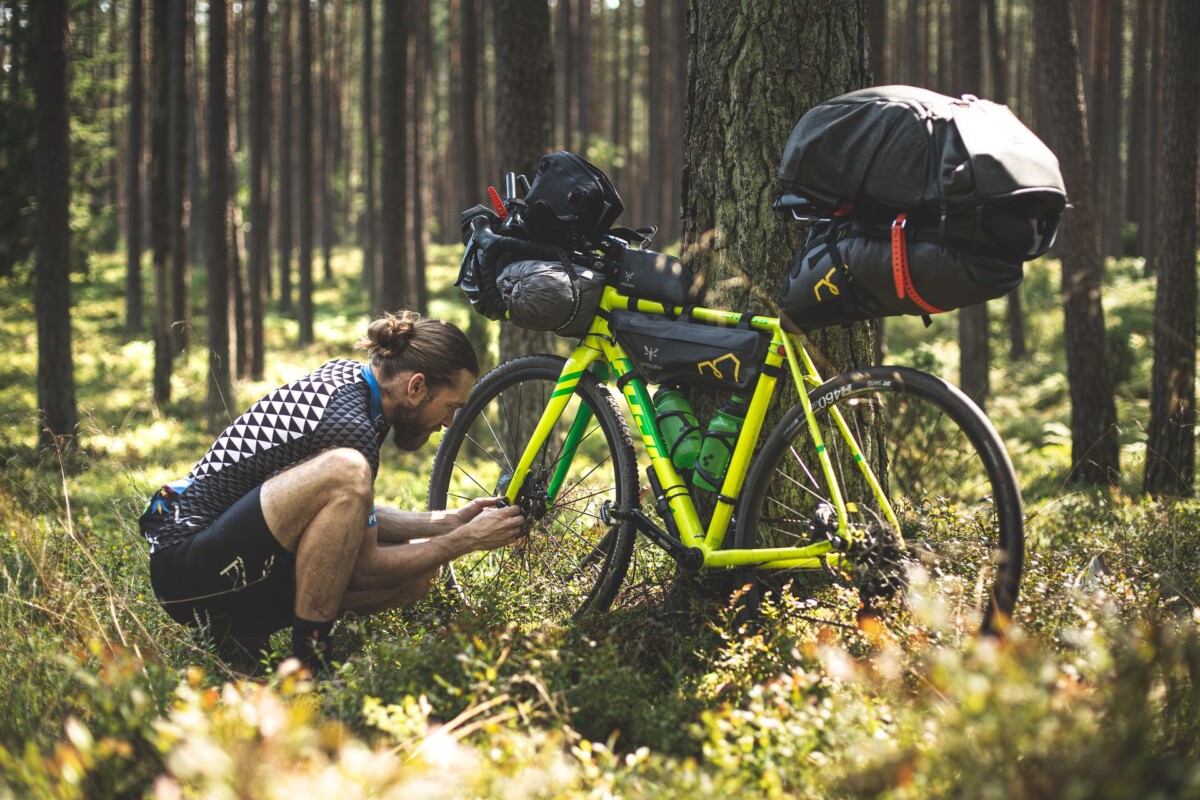
Also remember that your bike is not invincible. You may encounter punctures on your route: patches are always welcome, if not a spare inner tube.
A small tool kit is also a must have in bikepacking, to repair or adjust certain components of your bike, as well as a pump to inflate your tires. On long journeys, it is advisable to bring a few replacement items such as a pair of pedals.
If your bike is protected against bad weather and the road, it may not be protected against thieves: prepare locks. You also have to find the right balance between robustness and weight, because bikepacking is based on the idea of traveling relatively light.
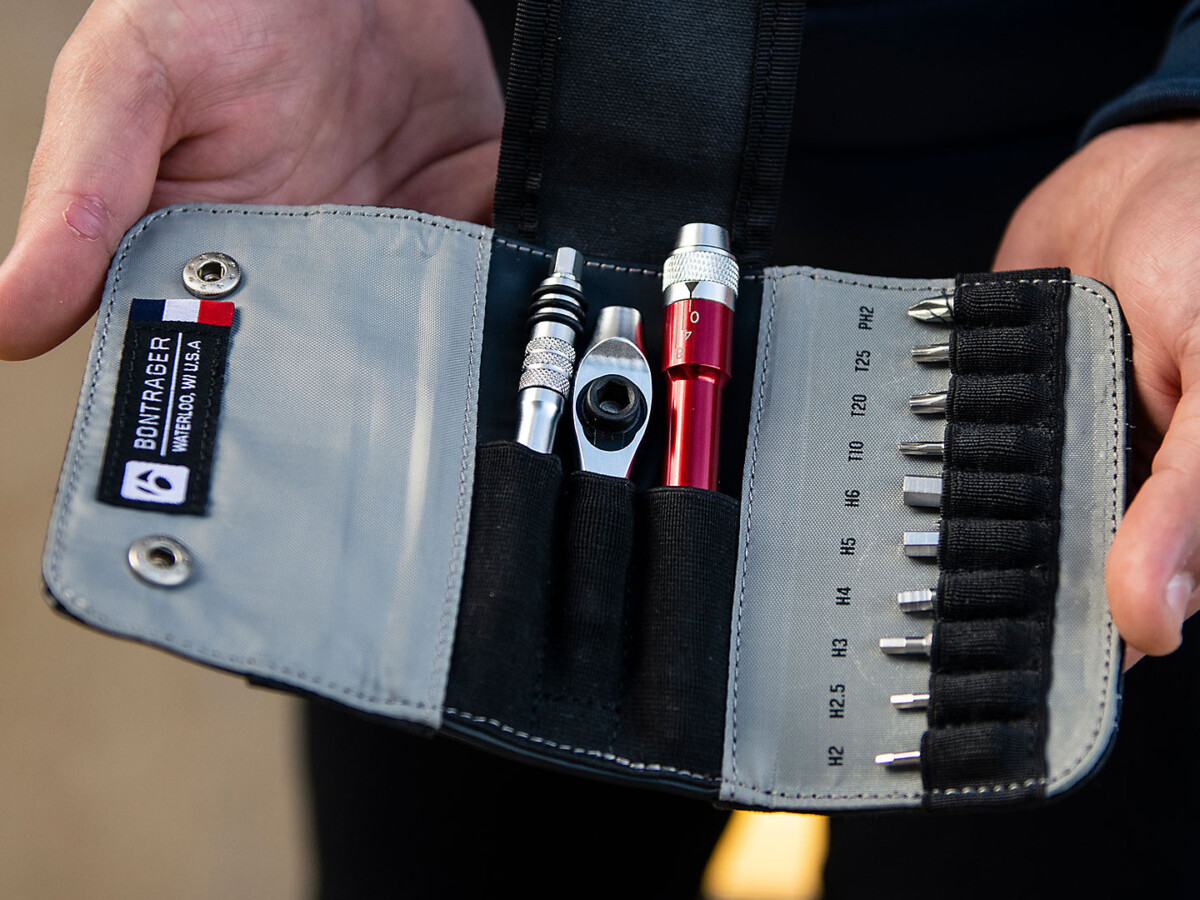
How to equip yourself for bikepacking: the importance of panniers
To take what you need while bikepacking, you must therefore limit yourself to the panniers attached to the bike (it’s the god of bikepacking who says so, we comply!). There are four main types:
- Handlebar bag : it attaches to the front overhang, via a metal structure or with Velcro, with the limit of the width of the handlebars. It can be low if you have a road-type handlebar. It is practical to quickly access certain things, such as your phone, a cereal bar, or your important belongings such as your wallet;
- Frame bag : between the tubes of your frame, the empty space is just waiting to be occupied! The bag is either suspended or placed above the upper tube, or attached to the lower tube or even integral (several attachments). Be careful, if it accepts heavy objects, it must not be too wide so as not to hinder your legs when pedaling;
- Saddle bag : fixed at the level of the seat post or even on the saddle rails in addition, it can be long and offer a large volume, the best being a metal structure, with heavy objects placed towards the front thus guaranteeing good balance;
- Fork bag : the two arms of the fork also serve as attachments for two storage spaces, but be careful not to make it too heavy, as this can penalize the maneuverability of your bike. Finally, please respect a minimum balance between the two right and left saddlebags.

The entire structure of the bike can be used to support bags and equipment – Source: Unsplash/worldsbetweenlines

Here, it’s lighter and shows the different bags and possible points for your water bottles – Source: Trek

To each their own, the luggage rack may be a plus, but be careful of backpacks that quickly heat up your back – Source: Unsplash/worldsbetweenlines
That was for the bike, now let’s move on to the bikepacker’s equipment. Because you need a minimum of equipment for the weather and the conditions of the different environments you will cross.
The world of sports cycling is full of solutions: from jerseys to shorts in hot weather, including leg warmers, jackets against the cold, waterproofs for the rain, as well as caps or glasses for the sun. And of course, the icing on the hat, we don’t forget the helmet!
Which bike for bikepacking?
It all depends on the type of trip you plan to do. Please note that you do not have to buy a bike for bikepacking. Your daily grind can be used for your excursions or your bike trip, without modification (but not without equipment!).
If you have a large majority of asphalt and few elevation changes on your route, your rigid bike is more than enough. However, it needs attachment points for the saddlebags: be careful, not all of them are designed for this. Additional suspension, or a VTC, is welcome if you tackle off-road driving.
If your profile is more sporty, a road bike will be your ideal version for pure asphalt, to go at high speed and swallow more kilometers. If gravel and paths are on the program, gravel, a versatile derivative of the road bike, is more suitable with its specific tires.
It is even the bike of choice for bikepacking enthusiasts. These two types of bike are often designed with a low handlebar, favoring a more efficient active sports position. If you prefer a quieter ride or with a more comfortable position, aim for a bike with a high handlebar.

The mountain bike with large tires and suspension for mostly uneven terrain -Source: Unsplash/cubeofwood

VTC for short, comfortable journeys – Source: Unsplash/suzanne_ella

The road bike to trace the asphalt – Source: Unsplash/fromaugusto

The versatile road/path gravel – Source: Unsplash/greg_rosenke
As endurance is an essential criterion, do not go with an inexpensive or low-end bike, not designed for intensive use. However, there are wide ranges, ranging from the generalist Decathlon or Intersport to the specialists Canyon or Specialized. We won’t mention all the brands, there are so many of them. But you have some basic references here.
If the terrain is uneven or mountainous, a mountain bike with front suspension is better at absorbing shocks and making you less tired in the long run. These bikes are also equipped with better tires, more grippy and resistant in off-asphalt conditions.
Electric bike in bikepacking, how to recharge?
Please note that all categories of bicycles mentioned have electric equivalents. Electric assistance is a relief for the less sporty or elderly, especially on routes with steep slopes, or for those who simply wish to increase their range of action without tiring.
An eBike is therefore also a comfort solution, to avoid too much effort, especially in the event of high daily mileage. Especially on long routes, a two-carrier type cargo bike is also an interesting solution given its good loading capacity.
Moreover, the German journalist and cycling expert Gunnar Fehlau is currently traveling across Europe as part of the Workpacking Tour 2023, precisely on the handlebars of a biporter. Proof that this type of vehicle is suitable for this practice.
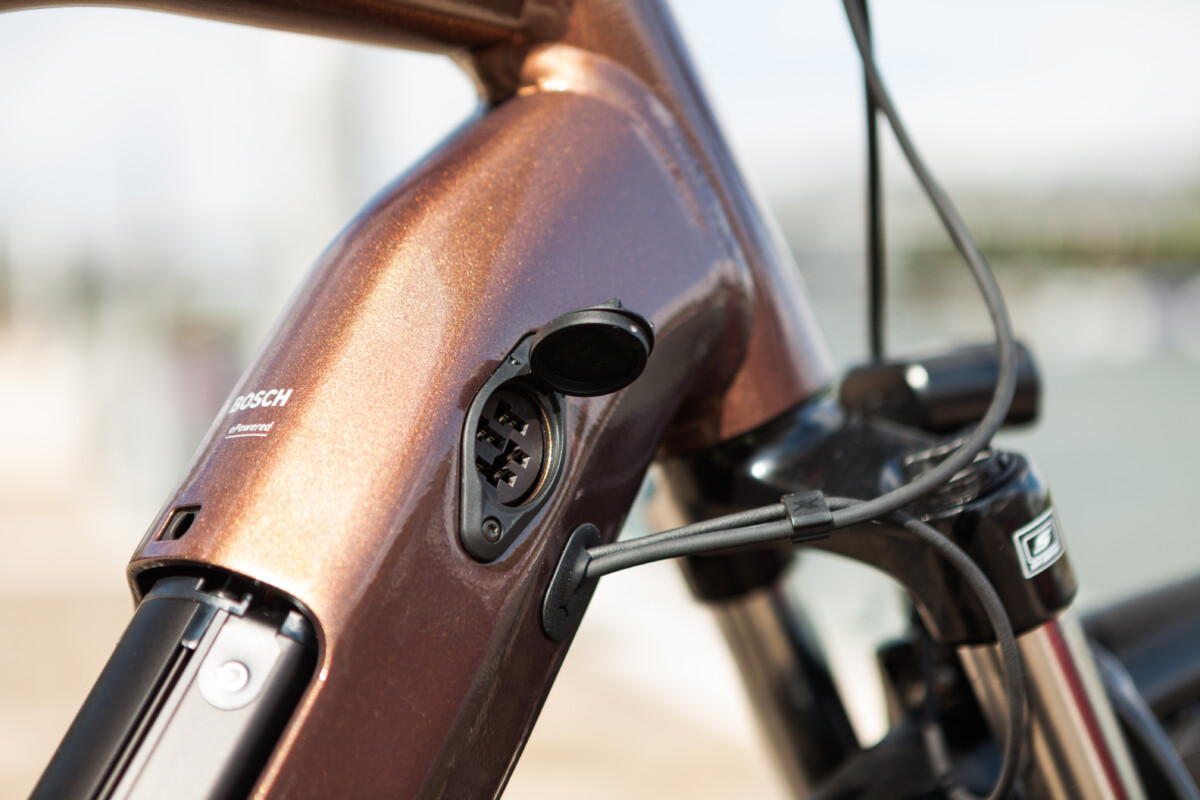
What about recharging? You should know that two types of batteries exist: non-removable or removable. In the first version, you must connect the cable directly to the bike, which must therefore be located next to a socket. It’s not necessarily the most practical.
The second battery solution is more flexible, because you can either take the battery to recharge in a restaurant, a campsite or with a generous host. And since it takes several hours to recharge, so choose a second backup battery to cover more kilometers or if your breaks are short. There are even some in bottle format to attach to your electric bike.
Bike routes for bikepacking
For ideas for bikepacking trips, many websites provide planned itineraries. You can consult the sites of enthusiasts, who have completed the routes themselves, sometimes with supporting reports, so as not to go blind. We can cite En Roue Libre, or Les Others which also offers a set of hiking maps, perfect if you want to detox from your smartphone.
Specialized cycling sites also have their pages or ideas for bikepacking trips. That of the French Cycle Tourism Federation “Vélo en France” is very exhaustive on the subject! You can also familiarize yourself with the network of cycle routes thanks to Vélo & Territoires.
Finally, more classic, the tourist sites of cities, departments or regions are an undeniable source of potential routes to combine adventure and tourism. Among them, that of La Seine à Vélo is even specific to cycling, very detailed.
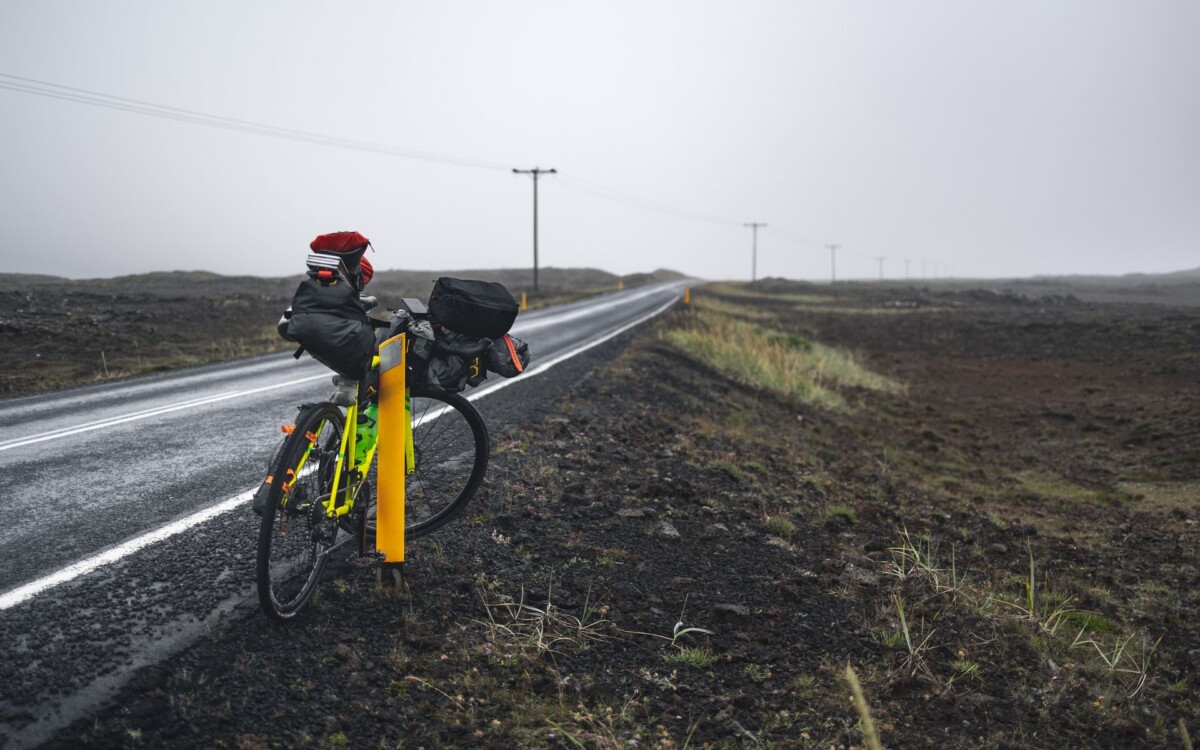
Remember that there are journeys of all lengths. There are those that last for a day, or those suitable for a weekend, a few days, or even epics lasting several weeks. Above all, aim for the distances and difficulty of the course, so as not to get stuck halfway. And don’t necessarily go alone, it’s better with friends to motivate yourself in case you’re feeling sluggish!
Cycling events are also an opportunity to practice bikepacking, which sites list, such as Nafix for example. The most adept and sporty will go to Bikepacking.com with special competitions in Europe, at the crossroads of ultra-cycling, to challenge themselves.
Where and how to sleep while bikepacking?
If you indulge in bikepacking on long journeys, you will obviously need to find somewhere to sleep or stay. All the better if friends or acquaintances are on the way, but the tent with sleeping bag, and its derivatives, are easy options to be flexible, as long as it fits in your storage spaces. There are four main ones:
- The classic tent, with maximum protection but bulky;
- The tarp, a compact but basic canvas;
- The simple (over)sleeping bag, not very protective but can be installed anywhere;
- The ideal hammock in the forest and off-road.
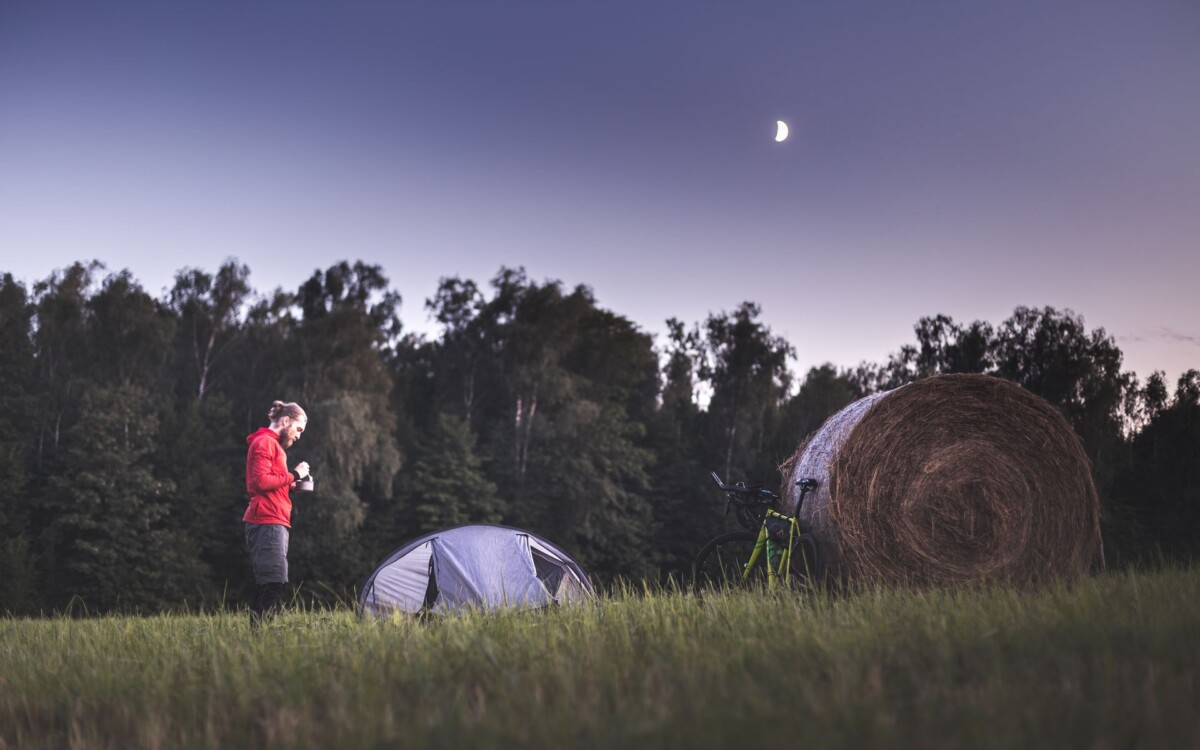
To pitch your tent, bivouac is the best solution, but it is not possible everywhere. So try to identify compatible locations in advance, if not a campsite.
Don’t forget to book as some popular venues may be fully booked before your arrival. If the tent solution is not possible, there are hotels, hostels or B&Bs. A sacrilege for purists, but hey, everyone has their own religion and their own way of practicing bikepacking.
